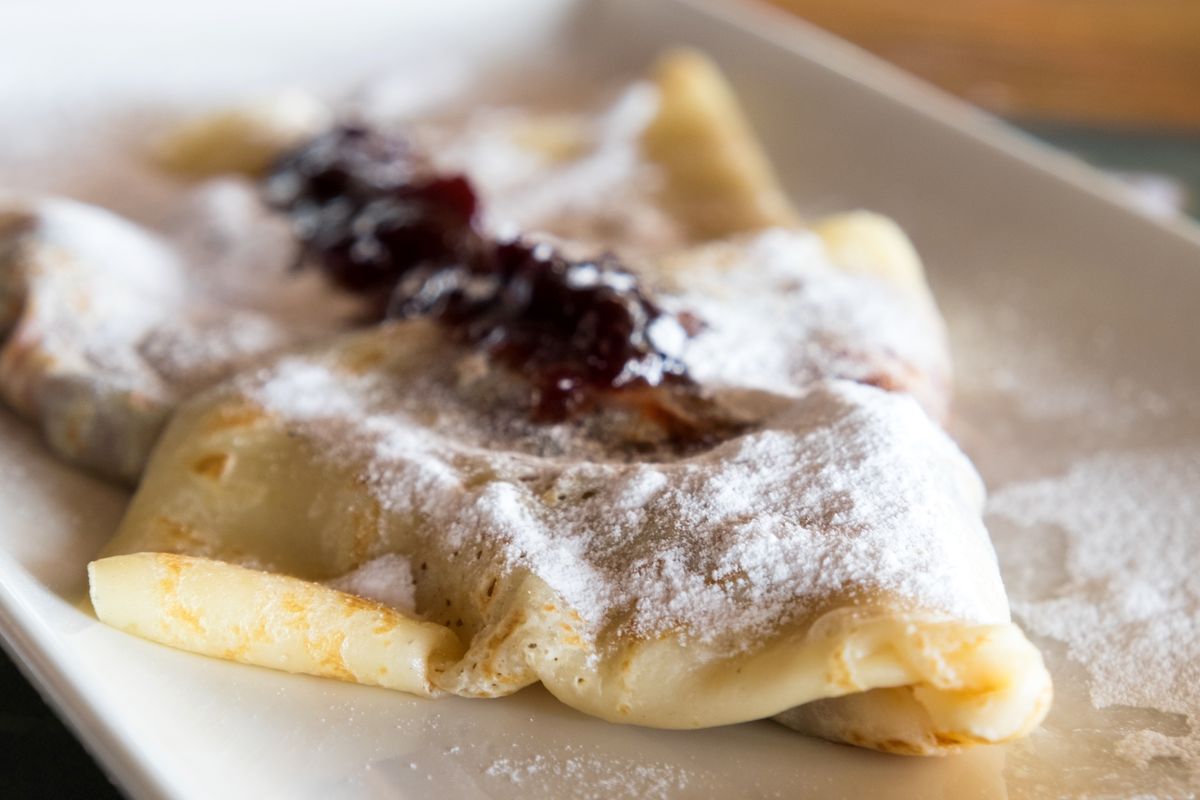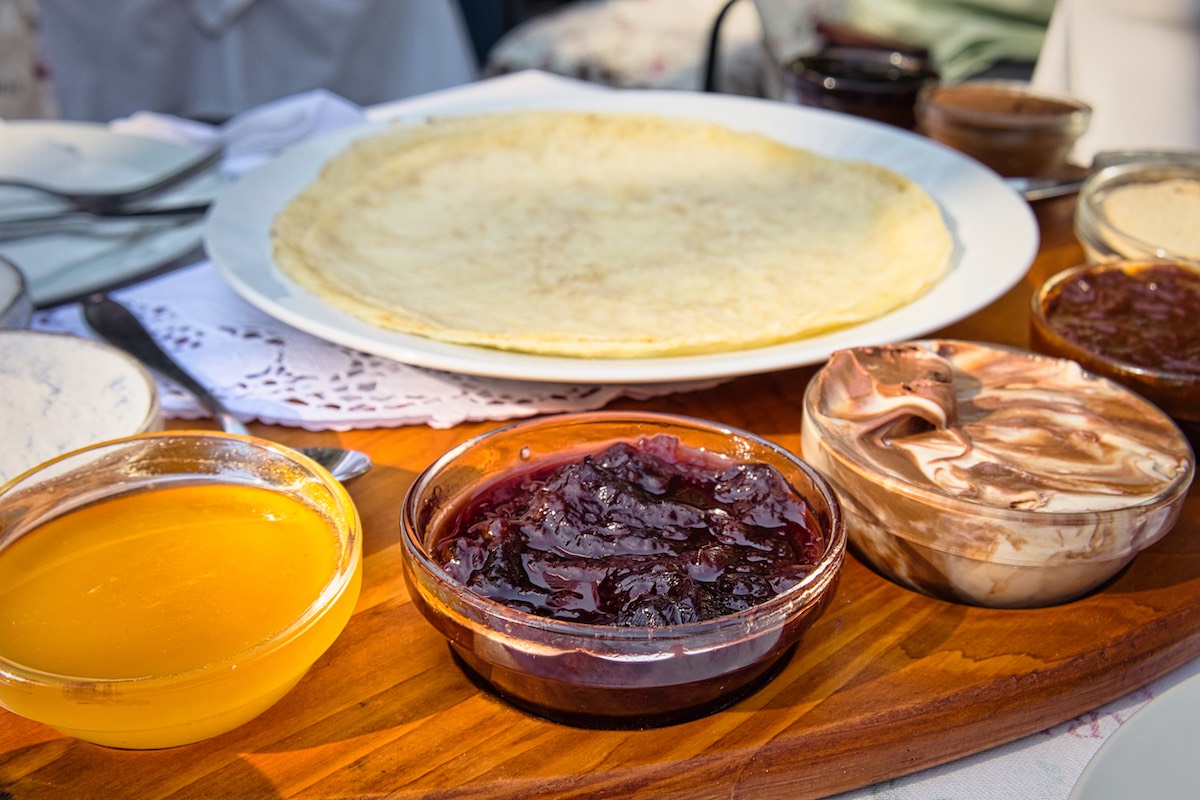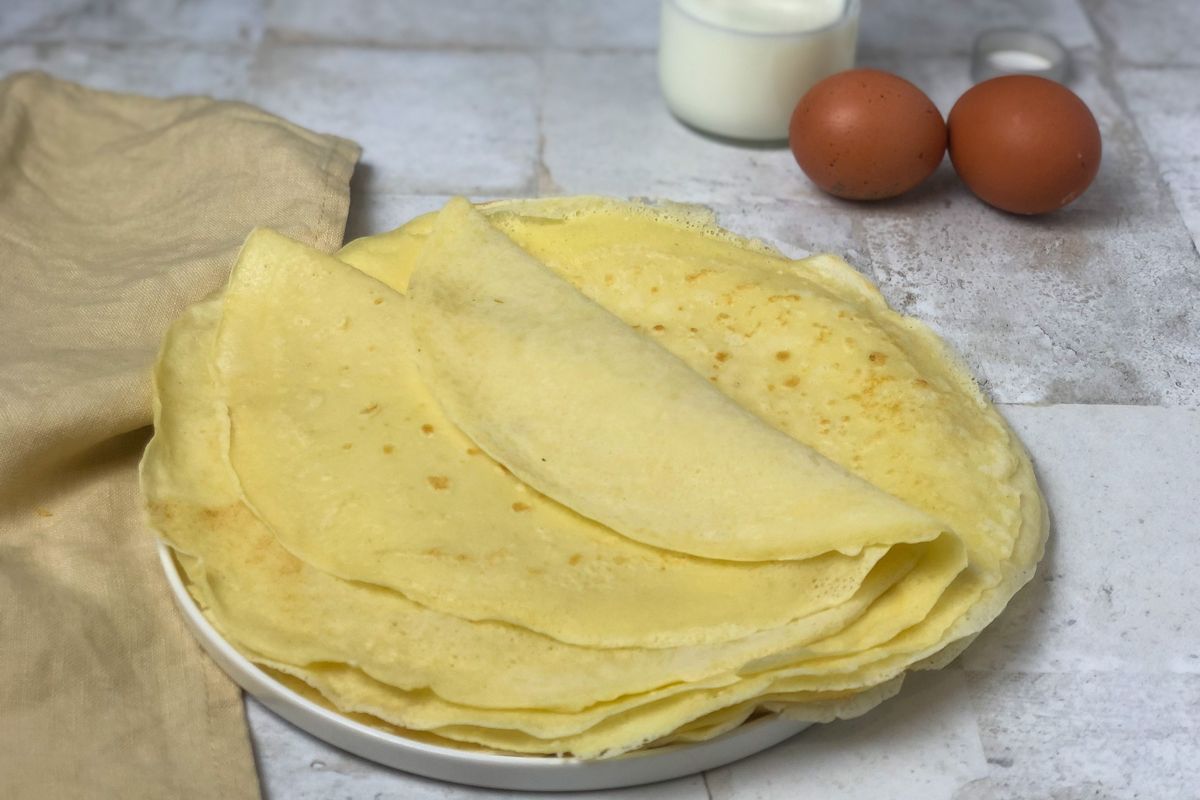Recipes
Let’s discover a typical Hungarian dessert: palacinka


Palacinka of Hungarian origin is a dessert similar to crepes. Served with jam or chocolate they are truly amazing.
Palacinka is a typical Hungarian dessert also widespread in other European areas, especially in the territories of the former Yugoslavia, Croatia and Slovenia. In Italy, it is found above all in Trieste, a border city that has adopted some of the typical dishes that have marked its history.
To prepare palacinka with the original recipe, few ingredients are used such as eggs, flour, milk and sugar. The result is a smooth batter , cooked in a pan just like a crêpes and served with a filling of jam or chocolate . The difference between crepes and palacinke lies in the absence of butter in the latter: let's prepare them together!

How to prepare the palacinke recipe
- First, break the eggs into a bowl.
- Then add the flour and mix well.
- At this point, slowly pour in the milk , mixing with a whisk to avoid the formation of lumps.
- Finally, add the sugar and a pinch of salt . The result will be a rather liquid batter which will be left to rest in the refrigerator for at least an hour before proceeding with preparation.
- Once the resting time has elapsed, grease a pan with a drizzle of oil . When it starts to sizzle, pour in a ladle of batter and rotate the pan to distribute it and form a thin layer.
- As soon as the edges begin to lift , turn the palacinka and continue cooking for another minute.
- Keep the palacinke warm and serve them filled as desired with creams or jams (tradition calls for homemade plum jam ) or plain, just with a sprinkling of icing sugar.
We leave you a short video that illustrates all the steps to make the recipe. The doses, as always happens with typical preparations, vary from family to family.
Among the other Hungarian desserts that we recommend you try are kurtos , maxi rolls similar to cannons traditionally cooked on the grill and served during the winter as street food.
Conservation
Once cooked, the palacinke keep well covered in cling film for a couple of days. We recommend placing them in the refrigerator and heating them briefly in a pan before serving.
Origin and history of the palacinka
As with crepes, it is difficult to reconstruct the history of palacinke too. According to some historians, an ancestor of this recipe dates back to 7000 BC when the cereals were crushed, mixed with water and cooked on a red-hot stone.
However, we have to wait many millennia before a recipe truly comparable to the palacinka comes to life. In 350 BC the Greek poets began to talk about plakous , while in 150 BC Cato the Censor introduced the recipe for placentas , a Latin name used to indicate flatbreads.
From that moment, together with the Romans themselves, the recipe spread throughout Europe, finding fertile ground especially in the Balkans . In Italy, however, the Friulian palacinka typical of Trieste is famous, while in the rest of the country similar preparations are called crespelle.
Riproduzione riservata © - WT












